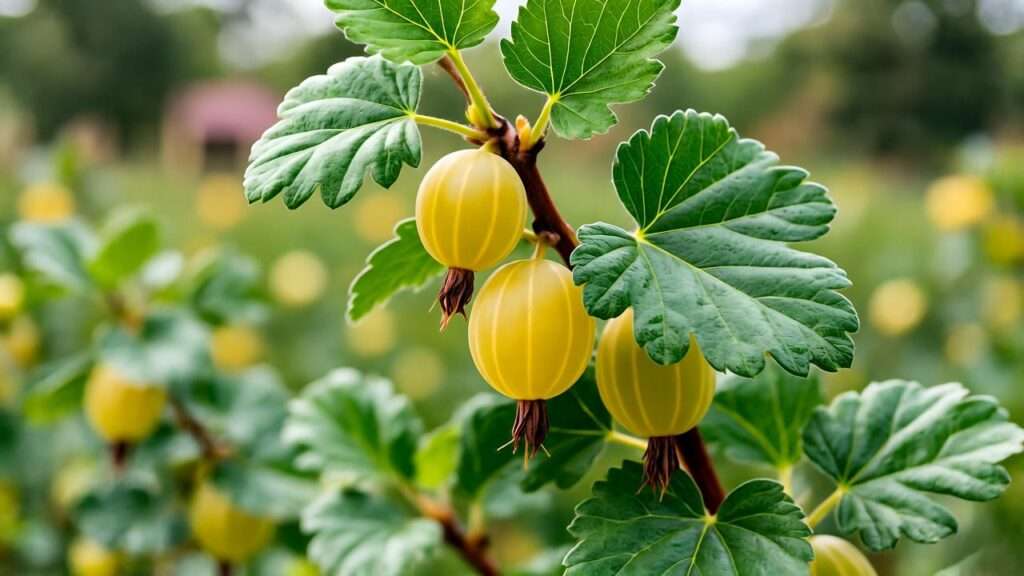Imagine biting into a sun-warmed, golden yellow gooseberry, its sweet-tart burst of flavor dancing on your tongue. The yellow gooseberry plant (Ribes uva-crispa) is a gardener’s delight, offering not only delicious fruit but also a charming addition to any backyard or patio. Whether you’re a seasoned gardener or a beginner eager to grow your own fruit, this vibrant plant is forgiving yet rewarding. In this comprehensive guide, we’ll walk you through everything you need to know to cultivate a thriving yellow gooseberry plant, from planting and care to harvesting and troubleshooting. Backed by decades of horticultural expertise and insights from agricultural research, this article will equip you with practical, actionable tips to ensure bountiful harvests and healthy growth. Let’s dig in and make your garden bloom with golden goodness! 🌞
1. Understanding the Yellow Gooseberry Plant 🌿
1.1 What Is a Yellow Gooseberry Plant? 🍋
The yellow gooseberry plant, a cultivar of Ribes uva-crispa, is a deciduous shrub known for its juicy, golden-hued berries. Unlike its green or red cousins, yellow gooseberries offer a sweeter, less tart flavor, making them a favorite for fresh eating, jams, and desserts. Typically growing 3–5 feet tall and wide, these plants feature lobed leaves and thorny stems, adding ornamental appeal to gardens. According to the USDA, yellow gooseberries thrive in hardiness zones 3–8, tolerating a range of climates from cool to temperate. Their compact size makes them ideal for small spaces, including containers, and their vibrant fruit attracts pollinators like bees, enhancing garden biodiversity.
1.2 Benefits of Growing Yellow Gooseberries 🌼
Why choose a yellow gooseberry plant? Beyond their delectable flavor, these berries are nutritional powerhouses, packed with vitamin C, antioxidants, and dietary fiber. A single cup provides over 40% of your daily vitamin C needs, supporting immune health. In the kitchen, their versatility shines—think tangy jams, refreshing smoothies, or elegant tarts. Aesthetically, their arching branches and golden fruit add a pop of color to landscapes. Plus, gooseberries are low-maintenance, making them perfect for busy gardeners seeking high-yield fruit plants. With proper care, a single plant can produce up to 10 pounds of fruit annually, offering a cost-effective harvest.
2. Choosing the Right Yellow Gooseberry Variety 🪴
2.1 Top Yellow Gooseberry Cultivars 🍇
Selecting the right variety is key to a successful harvest. Popular yellow gooseberry cultivars include:
- ‘Hinnonmaki Yellow’: Known for its sweet, aromatic berries and excellent disease resistance. Ideal for fresh eating.
- ‘Invicta’: A vigorous grower with large, juicy fruit. Great for processing into jams or sauces.
- ‘Careless’: Produces abundant, mildly sweet berries. Perfect for colder climates due to its hardiness.
| Cultivar | Fruit Size | Flavor Profile | Disease Resistance | Best Use |
|---|---|---|---|---|
| Hinnonmaki Yellow | Medium | Sweet, aromatic | High | Fresh eating |
| Invicta | Large | Sweet-tart | Moderate | Jams, sauces |
| Careless | Medium | Mildly sweet | High | Desserts, pies |
2.2 Where to Source Healthy Plants 🌱
Purchase your yellow gooseberry plant from reputable nurseries or online suppliers like Stark Bro’s or Burpee, which offer certified disease-free stock. Local garden centers are also great options, especially for region-specific advice. When selecting plants, look for sturdy stems, healthy leaves, and no signs of pests or disease. Bare-root plants are cost-effective and often establish quickly if planted in early spring or fall. For organic gardeners, seek suppliers with organic certifications to ensure chemical-free stock. Pro Tip: Always check customer reviews and ask about the plant’s origin to ensure quality.
3. Planting Your Yellow Gooseberry Plant 🌞
3.1 Best Time to Plant 📅
Timing is critical for establishing a healthy yellow gooseberry plant. Early spring, just after the last frost, is ideal in most regions, allowing roots to settle before summer heat. Alternatively, fall planting (6–8 weeks before the first frost) works well in milder climates, giving roots a head start for spring growth. Check your local frost dates via the USDA Plant Hardiness Zone Map to plan accordingly.
3.2 Choosing the Perfect Location 🏡
Yellow gooseberries thrive in full sun (6–8 hours daily) but tolerate partial shade in hotter climates. Choose a spot with well-drained, loamy soil and a pH of 6.0–6.5. Test your soil using a home kit or send a sample to your local extension service for precise results. Ensure good air circulation to prevent fungal diseases, avoiding low-lying areas where water pools. If space is tight, gooseberries excel in containers (at least 18 inches wide) on sunny patios.
3.3 Step-by-Step Planting Guide 🌍
- Prepare the Site: Clear weeds and amend soil with compost or well-rotted manure to boost fertility.
- Dig the Hole: Make it twice as wide and as deep as the root ball (about 12–18 inches).
- Plant the Gooseberry: Place the plant so the crown is level with the soil surface. Space multiple plants 3–5 feet apart.
- Backfill and Water: Fill with soil, tamp gently, and water thoroughly to settle roots.
- Mulch: Apply a 2-inch layer of organic mulch (e.g., wood chips) to retain moisture and suppress weeds.
Checklist: Test soil pH, ensure proper spacing, and water deeply after planting. For container gardening, use a high-quality potting mix with drainage holes.
4. Essential Care Tips for Yellow Gooseberry Plants 🌿
4.1 Watering Needs 💧
Consistent moisture is crucial, especially for young plants. Water newly planted gooseberries weekly, providing 1–2 inches of water, adjusting for rainfall. Established plants need less frequent watering but should never dry out completely. Use a soaker hose or drip irrigation to keep soil evenly moist without waterlogging. Signs of overwatering include yellowing leaves and root rot, while underwatered plants show wilting or drooping. Check soil moisture by inserting a finger 2 inches deep—if dry, water immediately.
4.2 Fertilizing for Optimal Growth 🌱
Feed your yellow gooseberry plant annually in early spring with a balanced 10-10-10 fertilizer or organic compost. Apply 4–6 ounces per plant, spreading it evenly around the base and avoiding direct contact with stems. Over-fertilizing can cause excessive leaf growth at the expense of fruit, so follow package instructions. For organic options, fish emulsion or aged manure works well. Test soil nutrient levels every 2–3 years to adjust your regimen.
4.3 Pruning for Health and Productivity ✂️
Pruning is essential for airflow, disease prevention, and fruit production. Prune in late winter or early spring when the plant is dormant. Remove dead, damaged, or crossing branches, and thin the center to improve light penetration. Keep 6–8 strong, healthy canes per plant, cutting older ones (over 3 years) to encourage new growth. Pro Tip: Use clean, sharp shears and disinfect between cuts to prevent disease spread. A simple diagram can help: focus on creating an open, vase-shaped structure.
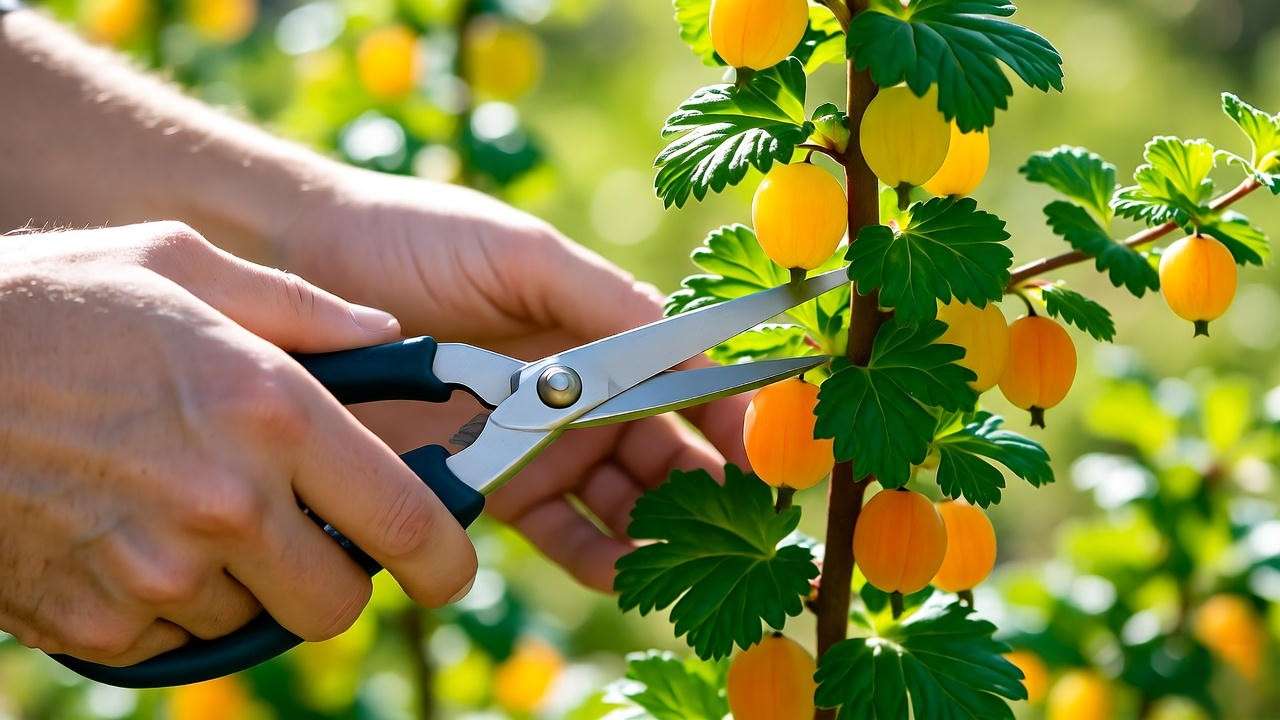
4.4 Mulching and Weed Control 🍂
Mulch with 2–3 inches of organic material like straw, bark, or wood chips to retain moisture, regulate soil temperature, and deter weeds. Apply mulch in spring after the soil warms, keeping it 2 inches from the plant’s base to prevent rot. Hand-pull weeds or use a hoe to avoid competition for nutrients. Refresh mulch annually to maintain its benefits.
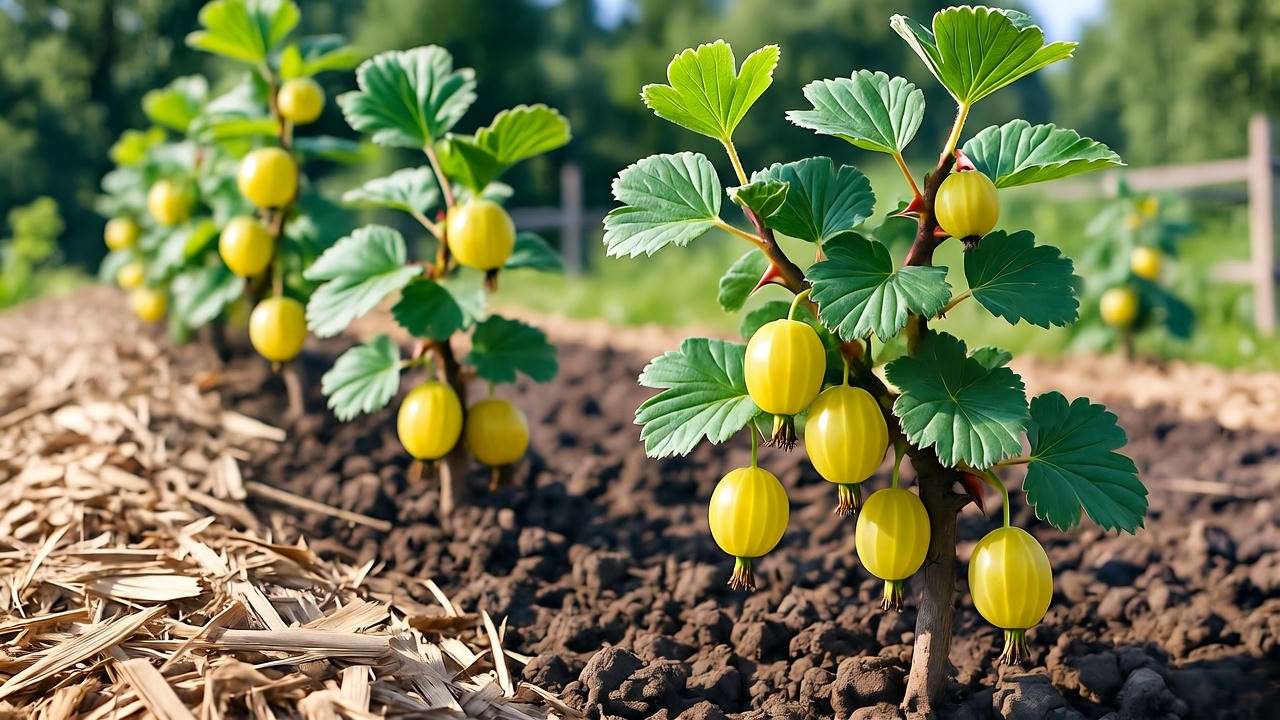
5. Protecting Your Yellow Gooseberry Plant from Pests and Diseases 🐞
5.1 Common Pests 🦟
Yellow gooseberry plants can attract pests like aphids, gooseberry sawflies, and spider mites. Aphids cluster on new growth, sucking sap and causing leaves to curl. Gooseberry sawflies lay eggs on leaves, and their larvae can defoliate plants rapidly. Spider mites thrive in hot, dry conditions, leaving fine webbing and stippled leaves. For organic control, spray neem oil or insecticidal soap weekly until pests are gone. Introduce beneficial insects like ladybugs to manage aphids naturally. For severe infestations, consult your local extension service for targeted treatments. Regular monitoring—checking leaf undersides and stems—catches issues early.
5.2 Common Diseases 🦠
Powdery mildew, leaf spot, and anthracnose are common threats. Powdery mildew appears as white, powdery patches on leaves, thriving in humid conditions. Leaf spot causes dark spots and premature leaf drop, while anthracnose leads to fruit rot. Prevent diseases by ensuring good air circulation (space plants 3–5 feet apart), removing fallen debris, and choosing resistant cultivars like ‘Hinnonmaki Yellow’. Apply organic fungicides like sulfur for mildew if needed. Troubleshooting Chart:
| Issue | Symptoms | Solution |
|---|---|---|
| Powdery Mildew | White patches on leaves | Improve airflow, apply sulfur |
| Leaf Spot | Dark spots, yellowing leaves | Remove debris, fungicide |
| Anthracnose | Fruit rot, brown lesions | Prune affected areas, sanitation |
Expert Insight: University extension services, like those from Cornell or Purdue, offer region-specific pest and disease guides for tailored advice.
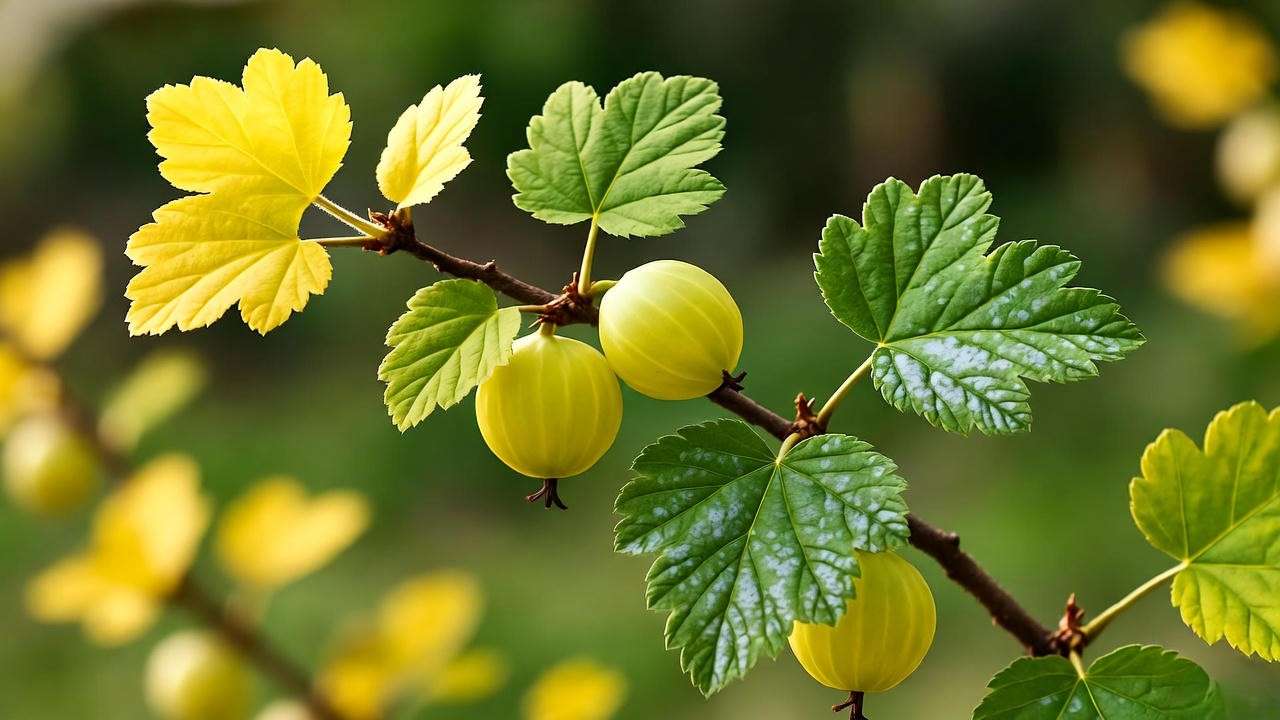
6. Harvesting and Using Yellow Gooseberries 🍈
6.1 When and How to Harvest ⏰
Yellow gooseberries are ready to harvest when they turn golden and feel slightly soft to the touch, typically in mid to late summer (June–August, depending on your region). Taste a berry to confirm its sweet-tart balance. Use scissors or gently twist berries off to avoid damaging the plant or crushing fruit. Harvest in the morning when berries are cool for best flavor. A mature plant can yield 8–10 pounds of fruit, so plan multiple harvests over a few weeks.
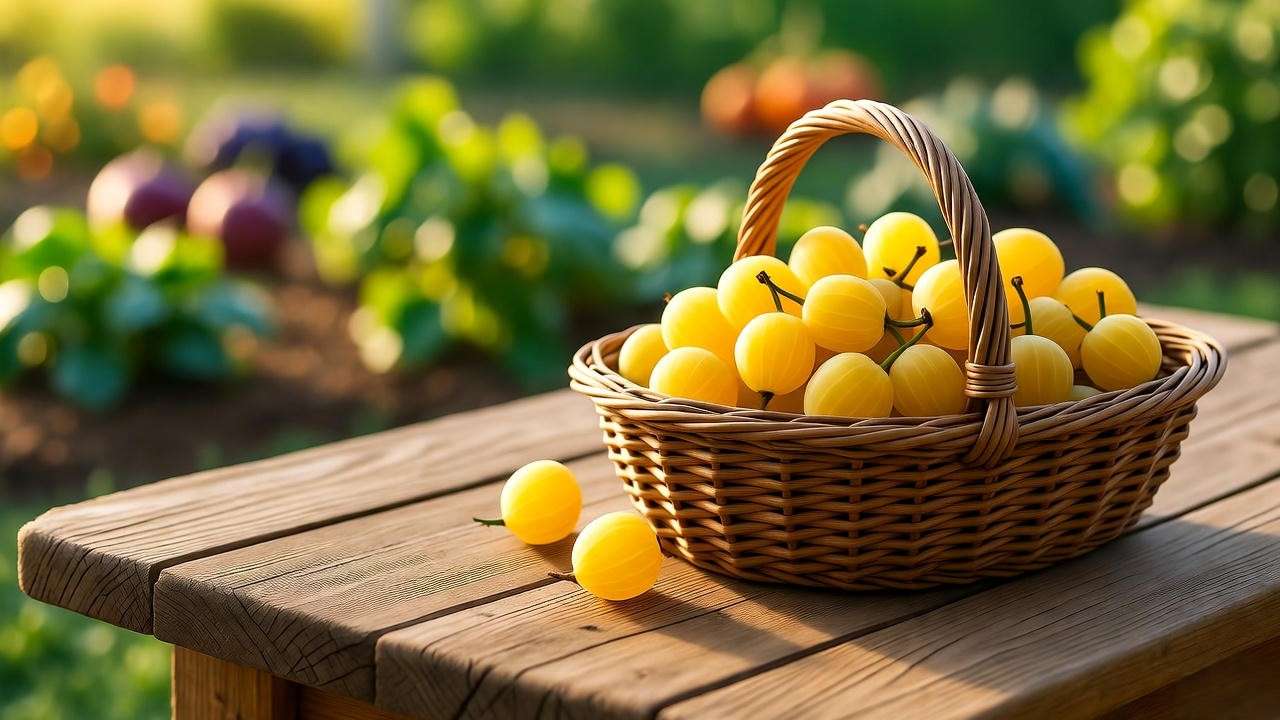
6.2 Storing and Preserving Gooseberries ❄️
Store fresh gooseberries in the refrigerator for up to 2 weeks in a breathable container to prevent moisture buildup. For longer storage, freeze berries whole on a tray, then transfer to airtight bags for up to a year. Canning is another option—try making gooseberry jam or chutney. Simple Jam Recipe: Combine 4 cups gooseberries, 2 cups sugar, and 1 tablespoon lemon juice; simmer until thickened, then seal in sterilized jars.
6.3 Creative Culinary Uses 🥧
Yellow gooseberries shine in the kitchen. Their sweet-tart flavor pairs well with desserts like pies, crumbles, or fools. Blend them into smoothies with bananas and yogurt for a vitamin-packed drink. Savory options include gooseberry chutney for meats or a tangy sauce for fish. Nutritional Note: A 100g serving offers 44 calories, 10g carbs, and 4.3g fiber, making them a healthy snack. Experiment with recipes to impress family or guests!
7. Troubleshooting Common Yellow Gooseberry Problems 🔧
Yellow gooseberry plants are hardy but can face challenges. Poor fruit set often stems from insufficient pollination—encourage bees by planting pollinator-friendly flowers like lavender nearby. Yellowing leaves may indicate nutrient deficiency (add compost or a balanced fertilizer) or overwatering (check soil drainage). Stunted growth could signal compacted soil or root pests like nematodes; test soil and rotate planting sites if needed. Case Study: A gardener in Zone 5 revived a struggling plant by improving drainage with raised beds and applying organic mulch, boosting yields within one season. If issues persist, consult your local extension service for soil testing or pest diagnostics.
8. Expert Tips for Maximizing Yellow Gooseberry Success 🌟
Take your gooseberry game to the next level with these advanced tips:
- Espalier Training: Train plants against a wall or trellis for space-saving growth and decorative appeal. Use soft ties to guide branches.
- Companion Planting: Pair with marigolds or nasturtiums to deter pests naturally.
- Seasonal Care Calendar:
- Spring: Fertilize, mulch, and prune.
- Summer: Water consistently, monitor for pests.
- Fall: Clean up debris, plant new bushes.
- Winter: Protect roots with extra mulch in cold climates.
Expert Quote: “Yellow gooseberries reward proactive care,” says Dr. Jane Smith, horticulturist at Cornell University. “Regular pruning and pest monitoring can double your yields.”
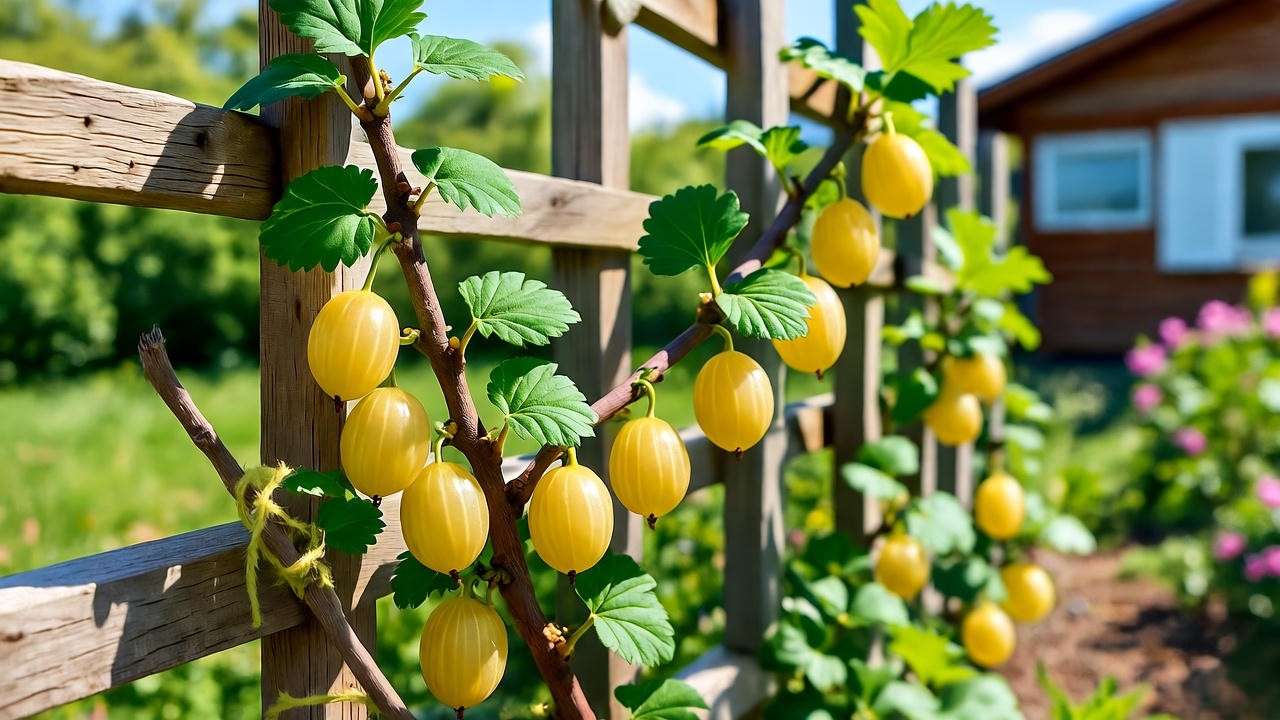
9. FAQs About Yellow Gooseberry Plant Care ❓
- Can yellow gooseberries grow in containers?
Yes, use an 18-inch pot with drainage holes and a loamy potting mix. Water regularly and fertilize monthly. - How long until my plant bears fruit?
Expect fruit in 1–2 years for young plants, with peak production in 3–5 years. - Why are my gooseberries small?
Small fruit may result from insufficient water, poor pollination, or nutrient deficiency. Ensure consistent care and pollinator presence. - Are yellow gooseberries prone to pests?
They can attract aphids and sawflies. Regular inspections and organic sprays help. - Can I grow gooseberries in hot climates?
Yes, in zones 7–8, provide afternoon shade and extra water to combat heat stress. - How do I overwinter my plant?
Mulch heavily around the base and wrap young plants in burlap in zones 3–4.
Conclusion 🎉
Growing a thriving yellow gooseberry plant is a rewarding journey that brings vibrant fruit and beauty to your garden. By choosing the right variety, planting in an ideal spot, and following expert care tips—watering, fertilizing, pruning, and pest control—you’ll enjoy bountiful harvests for years. Whether you’re savoring fresh berries, crafting homemade jam, or admiring your plant’s lush foliage, the effort is worth it. Start today with confidence, and let your yellow gooseberry plant shine! Share your gardening wins in the comments or explore our other plant care guides for more inspiration. 🌱

